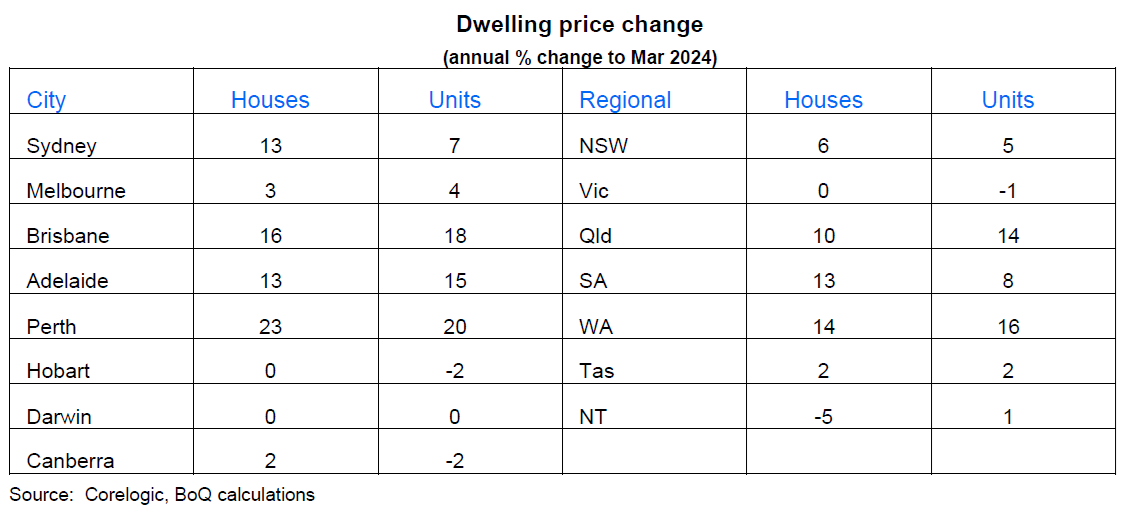Performance across individual markets remains mixed

House prices in Australia increased annually by 9% in March, a rise that occurred notably without any cuts to the cash rate, defying typical market trends.
BOQ Group’s latest housing market update has shown that while nationwide figures reflect strong house price growth, the performance across individual markets remains mixed.
Capital cities, particularly Sydney with its standout growth in standalone housing, have seen varying levels of price increases. However, luxury properties have generally underperformed, hinting at escalating affordability challenges.

More uniform growth was reported within states such as Queensland, South Australia, and Western Australia, with both houses and units experiencing strong gains. This contrasts with weaker performances in Victoria, Tasmania, and the Northern Territory, while New South Wales exhibits a mixed scenario where Sydney housing prices have surged, but unit prices and regional market growth have been more restrained.
According to BOQ chief economist Peter Munckton (pictured), the price increases can be attributed to a combination of high demand and limited supply.
“Typically, higher interest rates would have substantially cooled demand, but on this occasion that factor has been overwhelmed by the very strong increase in population,” he said. “At the same time, new supply has been limited by a range of factors including the high cost of land and materials, shortages of skilled labour and the high number of bankruptcies among builders.
“The high demand for housing at a time of low supply not only has boosted house prices but also means low vacancy rates and rising rents.”
Regionally, cities like Sydney, Brisbane, and Adelaide appear overvalued based on historical data, though not yet to levels typically predictive of a market correction.
Meanwhile, Melbourne and Perth prices align more closely with their long-term averages. Notably, Melbourne’s market is experiencing its lowest relative price against Sydney in two decades, a trend potentially influenced by a higher availability of housing stock and varying demand dynamics, including changes in household sizes post-COVID.
Looking ahead, Munckton said the market outlook suggests continued growth across various cities with the potential for rate cuts in 2025 poised to bolster the upward trajectory.
Any thoughts on the latest housing market update from the BOQ Group? Let us know by leaving a comment in the discussion box at the bottom of the page.



